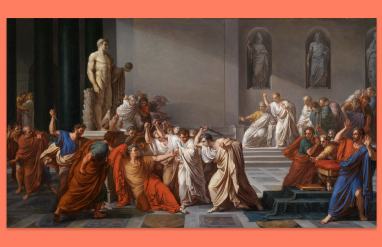By Ashley Austrew, Journalist and Writer
There are so many unique ways to show love to teachers, and this year they deserve it more than ever. As we approach Teachers’ Day, which you might also know as National Teachers’ Day or Teacher Appreciation Day, on May 7, you’re probably thinking about what special presents you can give to the educators in your life to celebrate their amazing contributions to education.
Traditionally, Teachers’ Day takes place on the first Tuesday of every May. In the US, it’s often extended into a weeklong celebration called Teacher Appreciation Week. This is of course, not to be confused with World Teachers’ Day, which is a special day with similar themes, but was created by the United Nations and takes place on October 5.
On Teachers’ Day, and throughout Teacher Appreciation Week, it’s common practice for students to shower their teachers with presents, gift cards to their favorite restaurants and stores, and handwritten thank-you cards and notes. But there’s another gift that’s not quite so common anymore, though it has a longstanding history with teachers: the apple.
If you brought your teacher an apple today, they might give you a strange look, but apples have long symbolized education, and it’s believed that there were several points in history when students actually gave apples to their teachers. How did this all get started? Keep reading, and let’s take a bite out of the fascinating history of bringing apples for the teacher.
Teachers once received apples by the basketful
There are a number of theories about how apples came to be a gift for teachers, but the tradition may have originated for more practical reasons than you might think. Before modern schools existed, teachers often lived with the families they worked for and were paid very little.
In the Apple Delights Cookbook, author Karen Hood writes that during the 16th to 18th centuries, parents throughout Denmark and Sweden often gifted teachers with baskets of apples and other food to help compensate for their poor wages.
Teachers in the US faced a similar situation. On the American frontier, families were often responsible for housing and providing for teachers if they wanted their children to attend school. Because apples were an abundant crop, students would bring teachers apples as a form of sustenance and a token of appreciation. It’s also interesting to note that school often starts in September, which is peak harvest time for many different kinds of apples in the Northern Hemisphere.
It’s thought that the tradition of bringing apples to teachers carried on even after schools were modernized. In the 1920s, apple polishing was used as a common slang term for trying to win favor or suck up to a teacher. (See also apple polisher.) Apples continued to show up as symbols for teachers and education over the years. Bing Crosby may even have played a role in solidifying the connection between teachers and apples. The crooner sang on a hit duet in 1939 called “An Apple For The Teacher.”
While the origin of the apple tradition is not set in stone, it’s clear the thread between apples and teachers spans multiple decades and continents. Regardless of its origin, the tradition of giving apples to teachers has always been a way of showing appreciation. These days, we still understand the importance of doing that. The only difference is that now we show our appreciation with Starbucks gift cards and heartfelt thank-you notes.
The value of teachers and online tutors
Teachers come in many forms in our lives, from college professors to after-school tutors, and each of them is deserving of a heartfelt thanks. Another way we can demonstrate our appreciation for teachers is by investing in our education and making sure we get the most out of everything they have to teach.
It’s impossible to overstate the value of the work teachers do. This year (and every year), make sure you take a moment to thank the educators in your life, and maybe even bring them the modern equivalent of a basket of apples. They’re definitely worth it.
Ashley Austrew is a freelance journalist and writer from Omaha, Nebraska. Her work has been published at Cosmopolitan, Scary Mommy, Scholastic, and other outlets. For more by Ashley, read: “Teacher” vs. “Tutor”: Why Most Kids Need Both| Leave The Best Impression With Our Tips For National Proofreading Day | Make Your Writing The Star Of National Grammar Day With These Tips














